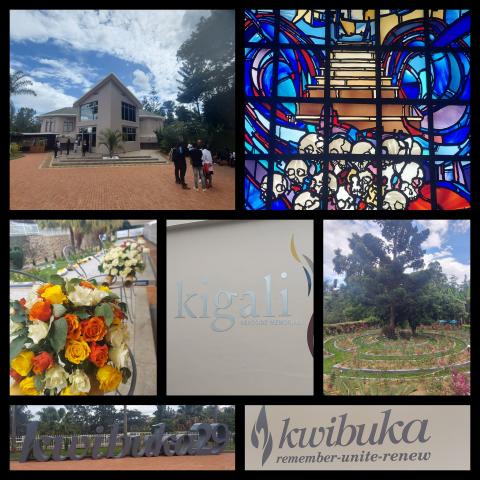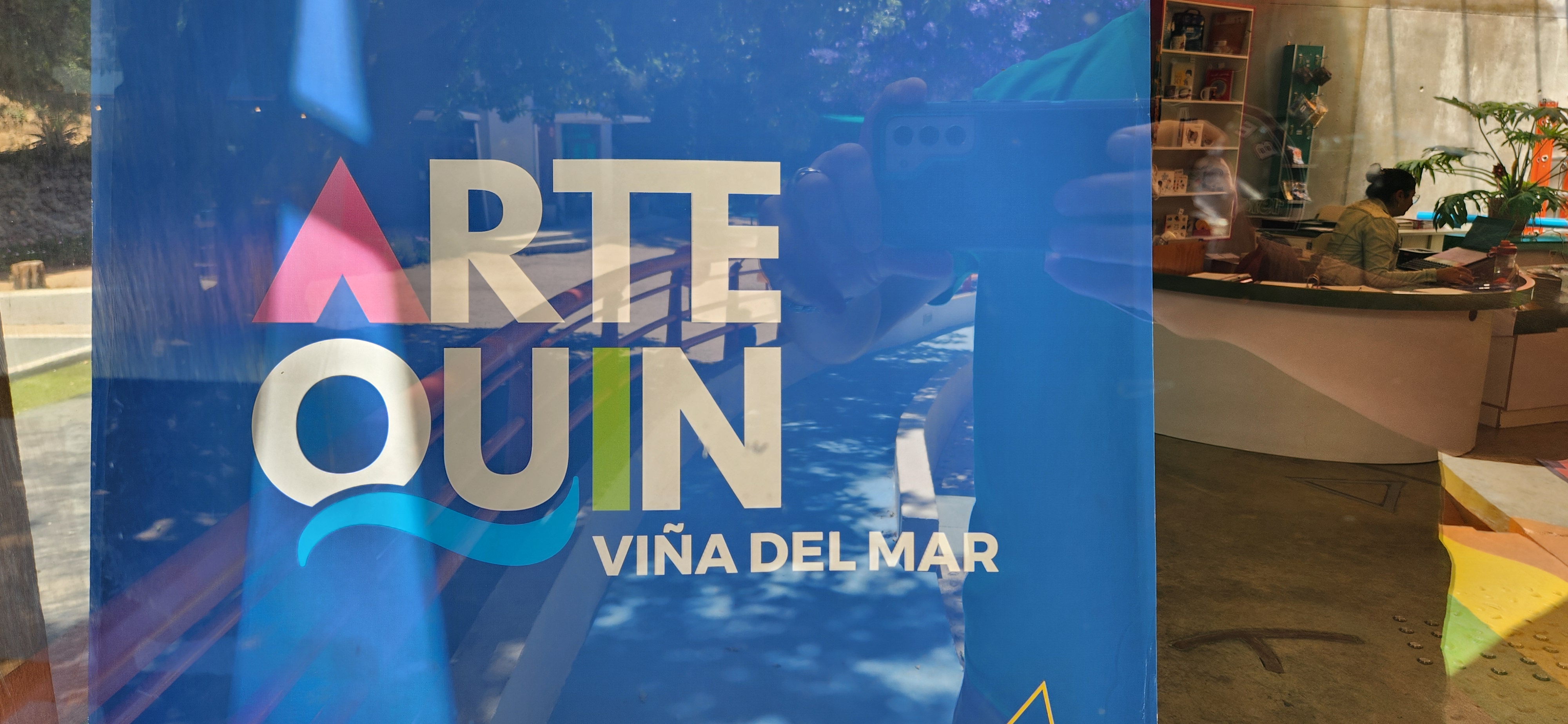
Once we arrived at the memorial, we got some headphones and started the walking tour through the gardens. The gardens were set up in a clever sequence to provide some history and meaning to the conflict that was brewing in Rwanda (and the region - remember, I mentioned earlier that this same conflict btwn Hutus and Tutsis impacted Burundi as well) since colonial times. While they gained independence in 1962, the struggle continued...
The gardens were laid out to tell the story, and they did a good job of identifying weaknesses and mistakes in the sequence of events that led to 100 days of genocide in Rwanda. For example, one of the gardens had planters with elephants on cell phones to symbolize that Rwandans (and other witnesses) should have been telling the world (louder) what was going on. This made me think of Martin Niemoeller's quote - "First they came..." https://encyclopedia.ushmm.org/.../martin-niemoeller... and is another heartbreaking reminder that even today - we need to speak up for injustice in our own neighborhoods, schools, towns, and more!
Once we silently walked through the mass graves and paid tribute to victims by reading names from the unfinished wall at the memorial, we went inside to the museum part of the memorial. It began...
"This is about our past and our future
Our nightmares and dreams;
Our fear and our hope;
Which is why we begin where we end...
with the country we love..."
Of course, the conflict that culminated in 100 days of slaughter against the Tutsis by the Hutus had roots in the colonial era https://www.un.org/.../rwanda/historical-background.shtml and I've always tried to have my students look at imperialism from different perspectives - especially the colonized. My time in Kenya, Burundi, and Rwanda gave me some new things to consider and material to present to my students. As we continued to work through the timeline in the museum, I spotted eerie connections to today...such as the role of extremist media. I shared some of the photos I took of the narrative because I think it's important to understand that there are people out there playing a long game to influence the masses into following their plans - they use various tools for propaganda, like the media. Check out the Hutu Ten Commandments from 1990.
I am sure just browsing through this post and the sampling of photos I've shared is hard, but we must bear witness to these past atrocities and learn how to recognize danger in the future. The most heartbreaking room in this memorial for me was the Children's Room - which read, "Children, you might have been our national heroes..." as you enter. I immediately thought that every American needs to walk through a room like this one, that includes photos and belongings of the children who have died in school shootings to bring those news stories closer to home - to remember, unite, and renew!
While we can all say "never again", the realities of the world we live in today remind us that it's all too possible. The global challenges ahead might be difficult to think about, but if we do not educate ourselves and speak out now...who will speak out for us later?
- Log in to post comments
























